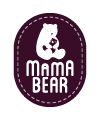Moms, breastfeeding is not always easy. There are so many twists and turns that Moms have to go through when struggling to provide breast milk for your little one. One of them is pain during breastfeeding. This pain may be caused by a milk blister, also known as a milk bleb or nipple acne. Let’s learn more about what milk blister is and how to treat milk blister so that Moms can breastfeed comfortably for your little one once again.
What is Milk Blister / Milk Bleb / Nipple Acne ?
One of the problems that might arise when you breastfeed is milk blister or nipple acne. Maybe some of you don’t know about this yet. What is milk blister / milk bleb?
Milk blister or milk bleb or nipple acne is a sharp pain when your little one is breastfeeding. Moms can pay attention to the nipple area if there are white spots like pimples and usually contains pus. Milk blisters can occur not only on the nipple but also around the nipple and more than one can appear. Because of this pain, you may feel traumatized and uncomfortable when breastfeeding your little one.
What causes milk blister? This can happen for the following reasons:
- Excess Breastmilk Production
This is caused by excess milk production. There could be a gap between the needs of our babies and the milk we produce. With the oversupply of breast milk, it can clog the breast.
- Excessive Pressure in the Breast Area
Pressure from bra that is too tight can also cause blockage in the breasts and trigger milk blister.
- Incorrect Latch
Incorrect latching by your little one while breastfeeding can cause blisters which are then infected by Candida (fungus) and in turns causes milk blisters.
- Problems with Latching On or Sucking
Your little one may have a sucking problem. Your little one might stick the nipple into the mouth in the wrong way because of a problem with his tongue. Conditions such as tongue tie or lip tie can affect milk blister / milk bleb to occur.
- Fungi Causing Ulcer
Blisters on nipple area might be infested with candida (fungus) which then becomes milk blister.
So, how to treat milk blisters? We’ll show you a few ways to help your milk blister get better.
How to Treat Milk Blister
If you experience Milk Blister, how to treat it? This is a powerful way for Moms to apply to make breastfeeding comfortable again, including the following:
- Warm Water
Moms can take a warm shower and prepare sterile gauze. Wrap the sterile gauze around your finger, rub slowly on the milk bleb area. This method of dealing with milk blister aims to make the skin layers open slowly and break apart so that the blockage opens.
- NaCl
Moms can pour a small amount of NaCl liquid into sterile gauze and rub gently into the nipple area affected by milk bleb. If you don’t have NaCl, you can replace it by making a boiled salt water solution.
- Oil
Moms, the next way to apply is to dip sterile gauze or cotton into food grade oil (olive oil, canola oil or regular palm oil can be used) then squeeze it and stick it to the nipple area before you use your bra. This method is done so that the normally dry area of the milk bleb remains moist.
- Breastfeed Frequently
Moms to reduce the blockage that occurs in the breasts, be diligent in giving breast milk to your little one, even though this is very painful and painful. But your little one’s suction while breastfeeding can help soften the milk bleb and then unclog the breasts.
5. Wear comfortable bra
Moms, since milk blister can also be caused by pressure of your bra, wearing comfortable bra is a must. Change your bra twice a day.
If this milk blister repeats, it could be due to candida (fungus). It can be treated with Mycostatin by dripping it on the nipples twice a day and also into the mouth of the little one to avoid cross contamination between mother and child.
We hope this info could help you, Moms!
Find Mamabear products at mamabear.co.id. Follow Mamabear’s instagram @mamabearid and subscribe Mamabear Youtube Channel for more information on breastfeeding, Moms!
